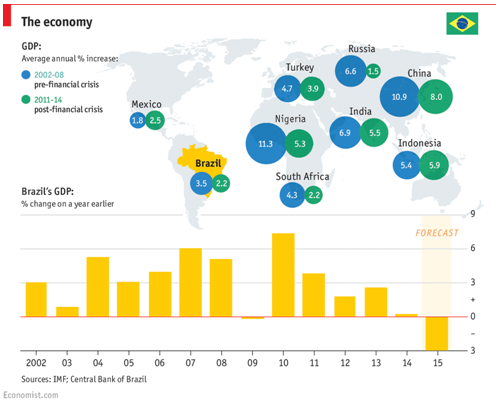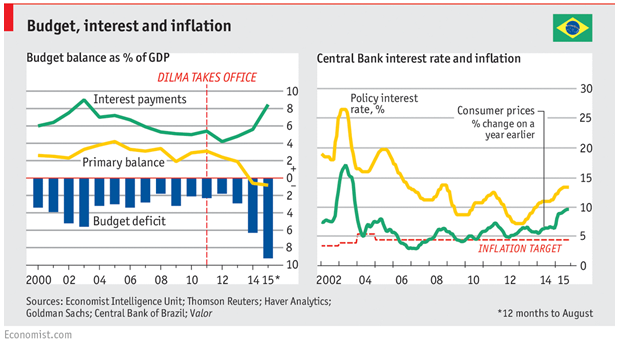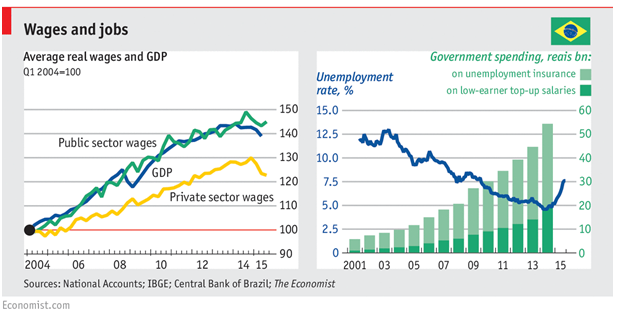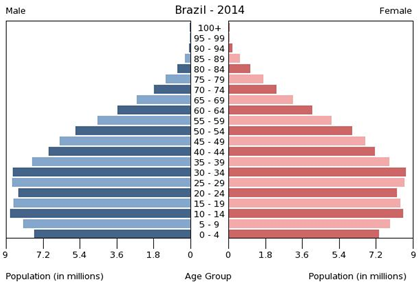УПРАВЛЕНИЕ ЧЕЛОВЕЧЕСКИМИ РЕСУРСАМИ В БРАЗИЛЬСКИХ КОМПАНИЯХ
Ю Ли
ORCID: 0000-0003-0903-0495, магистрант 2-го года обучения, Высшая школа менеджмента, Санкт-Петербургский государственный университет
УПРАВЛЕНИЕ ЧЕЛОВЕЧЕСКИМИ РЕСУРСАМИ В БРАЗИЛЬСКИХ КОМПАНИЯХ
Аннотация
В статье рассматривается практика управления человеческими ресурсами в бразильских компаниях. Контекст, специфический для конкретной страны и особенности ведения бизнеса в Бразилии определяют подход компаний к вопросу управления персоналом. В качестве примера рассмотрена компания «CCR Group». Анализируется структура компании, специфика культурного контекста, текущая ситуация, связанная с управлением человеческими ресурсами не только в этой компании, но и в целом в Бразилии. Цель данной статьи – дать рекомендации касательно того, как решить существующую проблему в структуре управления человеческими ресурсами и как развивать эту сферу в будущем.
Ключевые слова: человеческие ресурсы, управленческая практика, международный бизнес.
Yu Li
ORCID: 0000-0003-0903-0495, 2 year Master Student, Graduate School of Management, Saint Petersburg State University
HUMAN RESOURCE MANAGEMENT PRACTICES IN BRAZILIAN COMPANIES
Abstract
The article considers the analysis of human resource management practices for Brazilian companies. The country-specific context and organizational behavior peculiarities of Brazil define the companies’ approach for HRM practices. The example of “CCR Group” is considered as a case study example. Analysis from company structure, culture specific context, current situation of human resource management not only in this company, but also in Brazil, in order to give the recommendation about how to solve the exist problem within company’s human management structure and how to develop their human resource management in the future.
Keywords: Human resources, management practices, International Business.
- Company overview
1.1 The profile
CCR Group is the largest private infrastructure concession group in Brazil and one of the seven most significant in the world in such business areas as road concession, urban mobility and services. This company is responsible for almost 2,500 kilometers of toll-roads highways in São Paulo, Rio de Janeiro and Paraná states . Company’s strategic plans are aimed at diversifying portfolio and engaging in new business projects. According to that objective, CCR holds 38.25% of the social capital of science and technology park (STP), which operates the systems of electronic payments: Sem Parar and Via Fácil. This payment systems are used to charge payments on highways and on entrance to the parkings in Brazil. Nowadays, 94% of toll-roads and more that 100 parking facilities are equipped with such payment systems . Moreover, CCR participate as a 58% holder share in ViaQuatro, which manages and maintains yellow subway line in São Paulo. Furthermore, CCR obtains 45% of the social capital of Controlar – the concessionaire responsible for vehicle inspection of the entie fleet of São Paulo from the environmental point of view [1].
Nowadays, CCR incorporates the most significant indexes of the stock market in Brazil, such as the IBrX-50, the Tag Along, the IGC, the ISE, and the Ibovespa.
1.2 Business strategy
The main goal of the CCR Group is to diversify its portfolio and contribute to the social and economic development of Brazil through satisfaction of users’ needs and improvement their quality of life. Such institutional objectives were defined by CCR’s shareholders and the company reaches them through following its stated beleifs and values:
Table 1 – CCR Group values
| Beleifs | Values |
| · importance of initiative between the state and the private sector; · cutting edge entrepreneurial activity, simplicity, information reliability, seriousness of negotiations; · lawful results; · provide high quality public services aimed at satisfying needs; · social responsibility; · human dynamics; · participative management and results based compensation. | · Detachment (the growth of people and company); · Integrity (basis for personal and business relations); · Boldness (proactivity, creativity, challenge); · Respect (for others, for life, for nature); · Autonomy (responsible freedom of performance). |
According to the outline the company achieves its goals through participating in environmental projects, moderating urban facilities, improving transportation road, air, and maritime systems, while adding value to its business.
There are several strategies, adopted to accomplish CCR’s objectives :
- to expand and diversify concession network – intention to form new partnerships in different forms mostly in Brazil in the transportation and neighbouring spheres, related to the core business;
- benefits maximization by joining management of concessions – presentation and implementation of common management instruments to achieve operational efficiency and economies of scale;
- maximization of economies of scale – centralization of the main administrative functions, such as financial, legal, managerial, accounting;
- maximization of operational efficiency – introduction of the best practices across concession network, regarding services, maintenance, safety, and traffic management;
- explore related business activities – intention to correlate with neighbouring businesses in order to expand current operations into additional activities.
- Country-specific context (2013-2015 years)
The previous years Brazil’s economy started to stumble, last year GDP barely grew at all, and in 2015 is expected to shrink approximately by 3%. Due to high interest rates of 14% make borrowing very costly to service, comparing to European countries, so debt payments eat up more than 8% of output of the country.

Fig. 1 – Brazil GDP dynamics
The inflation rate in the country rises, on November 25th the Bank's monetary policy-makers made the rate higher by two percentage points, so it became 14.25% [Figure 2]. The private sector is negatively affected by current market conditions as government insists on very low rates of return, which makes much of industries uncompetitive.

Fig. 2 – Brazil’s budgeting and interest rate dynamics
In the past ten years wages in the private sector have grown faster than GDP, and even more – in public sector, what led to more borrowings and spendings. As for today, real wages fell comparing to 2014, and unemployment rate increased to 7.9% in October 2015 from 6.2% as earlier. [Figure 4]. Moreover, it is expected to reach 10% in 2016. The spending on unemployment insurance are being cut, the taxes and fuel duties are increased, so the bills for electricity and water go up too. This situation leads to lower disposable incomes of households as the huge part of it is spent paying back consumer loans and paying the bills.

Fig. 3 – Brazil’s unemployment dymanics
Pressing problems are outlined as poverty and high income inequality, crime, inflation, rising unemployment, and corruption. Brazil seeks to strengthen its economy and workforce in the long-run imposing local content and technology transfer requirements on foreign businesses. In the past the country used to be highly dependent on foreign energy producers, but now it has become self-sufficient in oil.
- Social structure
The population of the country as for July 2015 is 204’259’812, and it is growing with birth rate excessing the rate of death. As can be observed from the graph [Figure 4], which is skewed to lower aged population clusters, generally the population of Brazil now is relatively young. Thus, the current age structure is quite favorable in terms of labor force as the share of working-age population is significant. But the experts conclude that Brazil has not managed to develop its human capital and strengthen its social and economic institutions. In spite of that there are specials programs to bring intellectual capital and people with advanced skills back to the country.

Fig. 4 –Brazil Population Pyramid [Source: Central Intelligent Agency]
Brazil experiences extreme regional differences, especially in social indicators such as health, infant mortality and nutrition. The richer South and Southeast regions enjoy much better indicators than the North and Northeast. The urban population is now about 85.4% of total population. The religion in the country deals with the Catholic Church (64.6%), the Protestant community (22.2%) and other branches.
Currently Brazil possesses a huge labor force pool of 108 million of workers and is the 6th country by the indicator according to Central Intelligent Agency Report. It is expected that by 2025 the elderly will compose an increasing share of the total population due to the structure shift what will lead to the labor force shrink. Life expectancy is assumed to be as much as 73 years on average. Due to favorable economic conditions, the pensions are well-funded and the poverty among the elderly is almost wiped out, and tens of millions of Brazilians are lifted out of poverty. The middle class comprises more than half of Brazil's population. Some certain population groups are disproportionately affected, and this disparity in opportunities fosters social exclusion and contributes inevitably to Brazil's high crime rate. But nowadays the country is in progress of reducing social and economic inequality.
- HRM & OB peculiarities of Brazil
First of all, Organizational behaviour has emerged as a part of Management science in Brazil not long ago.
Human resources management and organizational behaviour in this country are highly shaped by cultural features and peculiarities, so cultural aspects should be reviewed first and foremost.
3.1. Peculiarities in human resource management
Recruitment. Two trends are worth to mention in that sense. First, due to diverse employee categories, there is no specific pattern and tradition in recruitment : some people are linked to specific organization, while others float from company to company. Another point is that while most of jobs are open for everyone via formal competition, some posts are open only to people ‘from within’.
Pay setting. The country has two alternative remuneration approaches. First one is a variable compensation that consists from a base salary and a supplement for special achievements and an academic degree. Second one is a system with no variable levels but with a pay levels as a motivational factor (used for management, public officers and auditors).
Work conditions. The average working yearly working hours are significantly higher in Brazil than in other OECD countries (1780 vs 1745). However, it is offset by more annual leave in large countries. Due to cultural peculiarities absenteeism level is also higher than the average, and employers are used to be less critical towards it, understanding their employees).
Performance. Brazilian companies has no common model of performance assessment. Evaluation is often based on outputs and feedback of closest supervisor. In public sector and large companies this feedback is done in written form and presented during annual meetings.
3.2. Peculiarities in organizational behavior
Business meals. Brazilians are concerned about food and they spend a lot of time on it. That is why many companies make business meals every Friday. During these events many internal issues are discussed and important decisions are made.
Attention to appearance. It is very important to look as good as possible at work. Brazilians are very judgmental regarding appearance. This nation is status-conscious and workers should reflect their position in appearance, communication and technical devices.
Small talk . Brazilian companies tend to be as informal as their workers are. Important meetings often start from talks about weather and other conventional things. It is done to make relaxed atmosphere and develop trust.
- HRM strategy and OB practices
Although CCR Group has complex organizational structure with several business units, its strategy regarding Human Resources remains equal for all departments. In 2012 Annual and sustainability report CCR Group posted six main principles that relate to human rights.
- Support and protection of human rights recognized worldwide.
- Guarantee of human rights compliance.
- Liberty provision for associations and confession of the right to collective negotiations.
- Avoidance of all forms of compulsory labor.
- Avoidance of child labor.
- Avoidance of all forms of discrimination.
Two main documents – Code of Ethics and the Social Responsibility Policy declare policies and procedures regarding the professional behavior of employees.
In the whole, HRM strategy in CCR Group have direction on employees’ development by special trainings and programs, provision of safe and healthy working conditions and offering good level of wages and benefits.
Recruitment
The process of recruitment does not differ significantly from the hiring procedures in majority of the companies. For example, in the end of 2013 CCR Group had 83 free vacancies and the process of selection included these steps:
- CV submission by e-mail.
- Candidate’s teamwork evaluation.
- Individual test.
- Interview with HR managers.
Motivation
CCR Group’s motivation strategy is built on both positive internal and external factors.
On the one hand, it provides competitive salary and benefits package for all jobs that includes food stamps, health insurance, dental plan, life insurance, discount card at pharmacies, transportation costs covering and pension plan.
Talking about motivation of Board of Directors it is necessary to mention that their payment consists of two parts: base fixed salary and variable portion that depends on approved profit sharing plan. Moreover, the performance of members of the Board of Directors, Committees, the Chief Executive Officer and the secretary of the Board is evaluated every three years. Hence, they have strong incentives to perform as well as possible.
Training and development
One of the most important development program for the company is The Leadership Development Program (PDL). This program is leaded with Dom Cabral Foundation that is the standard-setting institution in the area of leadership. This program develops leaders with the focus on company’s professional field. First, it gives to the participants of the program general knowledge about the main business-processes of a company. At the same time, each member is analyzed in terms of his (her) abilities and Individual Development plan is designed. Five hundred people took part in this program in 2014.
CCR Group also creates career opportunities for just-graduates and young specialists by Trainee Program. The aim of this program is to find talented and perspective graduates who can bring entrepreneurial spirit and innovative ideas to the company. Over 150 people were hired after this program (there were 8 editions of it) and participants of this program have quite high retention rate that equals 72%.
- Analysis of existing problems and challenges in OB or HRM areas
The analysis of current economic situation in the country, peculiarities of Brazilian culture and human resources management let us outline tree main problems to consider for such company as CCR. These problems are consequences of fast growth and expansion strategy that used by CCR during the last decade.
Problem 1: Internal communication difficulties
The very first problem identified is connected with internal communication issues. To keep working climate stable and efficient, employees have to be ensured about cross-functional communication system that provides steady information flow. There are two reasons for such problem occurred. Firstly, the company is growing fast and is widely diversified, so that IT technologies sometimes stand behind the pace. Secondly, high level of employees turnover makes workers feel uncomfortable while they proceed communications. The latter issue is significant and has considerable impact on employees’ efficiency.
Problem 2: Dissatisfaction of workers
Another critical problem was discovered by analysis of CCR employees’ and ex-employees’ reviews on internet source.
Overall, the company has a good rating (4 of 5) and many people describe it as “dynamic”, “nice to work” and even “great”. Forty-four people have evaluated CCR Group using these five parameters:
- Balancing Work / Life
- Salary / Benefits
- Stability / Advancement
- Management
- Corporate Culture
In this part the solutions for CCR’s problems are provided.
Solution to problem 1. Internal communications.
The solution that comes to mind first is connected with creation of some internal social platform. This would contribute to the building and development of communications across the departments and employees that is, as has been already said, is of high importance for the Brazilians as it is laid deeply in their culture and minds. This intranet network may be managed by specially trained people, who will be in charge of solving the issues connected with messaging, documentation transferring, event scheduling, and so on. Moreover, this mentors have to provide employees with clear view on goals and objectives, organizational culture and structure in order to ensure that everyone has the same idea of current and future development of the company. That mentors may help adapt to the corporate environment for new ones, and this would help to diminish the negative effect from high turnover of employees. Furthermore, this intranet platform may help to create groups of interests that would as well lead to better “get-to-know” each other issue. Finally, this platform can enable direct communications with the managers and the board, for instance, so that group community may be informed about what is happening in the decision-making level of the company.
Solution to problem 2. Dissatisfaction of workers
The problem can be solved by following several steps:
- Develop clear principles of career advancement. These principles may differ from one position to another; also, they should depend on the type of work (intellectual or physical) and take into account possibilities of horizontal or vertical development of the particular position.
- Create regular evaluation system for all positions, not only for managerial positions or members of Board of Directors.
- Provide the most objective way of evaluation to eliminate impact of personal preferences of evaluator.
- Link the quality of employees’ performance with their salary (the better is performance – the higher is appraisal).
- Prevent situations when employee becomes immediate subordinate of his relative or spouse.
- Reward with additional bonuses employees if they have worked for CCR quite a long time (increase bonuses according to increase of their experience in the company).
Список литературы / References
- About Group CCR | CCR Group [Electronic resource] URL: http://www.grupoccr.com.br/English/ccr-group/about-group
- BBC news | Brazil country profile [Electronic resource] URL: http://news.bbc.co.uk/2/hi/americas/country_profiles/1227110.stm; https://www.cia.gov/library/publications/the-world-factbook/geos/br.html
- Brazilian society and culture peculiarities [Electronic resource] URL: http://thebrazilbusiness.com/article/brazilian-society-and-culture;
- Brazil Overview [Electronic resource] URL: http://www.worldbank.org/en/country/brazil/overview
- Challenges – People – CCR – Annual and Sustainability Report 2011 [Electronic resource] URL: http://www.grupoccr.com.br/ri2011/en/challenges.html
- CCR annual sustainability reports 2012-2014 [downloaded from official website]
- CCR [Electronic resource] URL: http://ri.ccr.com.br/grupoccr/web/conteudo_en.asp?idioma=1&conta=44&tipo=47195
- CCR Brazil [Electronic resource] URL: http://www.indeed.com.br/cmp/Ccr/reviews?fcountry=BR&start=20
- Cultural analysis of Brazil [Electronic resource] URL: http://go-brazil.org/hofstede-dimensions-what-we-can-learn-about-brazilian-culture-part-1/
- Cultural information | Brazil [Electronic resource] URL: http://www.intercultures.ca/cil-cai/ci-ic-eng.asp?iso=br
- Decision-making under uncertainty [Electronic resource] URL: https://goo.gl/MGatmN
- Development and evaluation – People – CCR [Electronic resource] URL: http://www.grupoccr.com.br/ri2011/en/development-and-evaluation.html
- Economic backgrounder – Brazilians waxing and waning [Electronic resource] URL: http://www.economist.com/blogs/graphicdetail/2015/12/economic-backgrounder
- Empregos no Grupo CCR [Electronic resource] URL: http://www.vagassp.com/2013/12/23/empregos-no-grupo-ccr-vagas-de-trabalho-em-sp-e-rj
- Hofstede center. Cultural dimensions of Brazil[Electronic resource] URL: http://geert-hofstede.com/brazil.html
- HR strategies of Brazilian multinationals[Electronic resource] URL: http://www.scielo.br/pdf/bar/v7n4/02.pdf
- Human resources management country profile [Electronic resource] URL: http://www.oecd.org/gov/pem/OECD%20HRM%20Profile%20-%20Brazil.pdf
- International HR Strategy in Brazilian Technology Multinationals [Electronic resource] URL: http://www.scielo.br/pdf/bar/v7n4/02.pdf
- OECD. Human resource management profile of Brazil[Electronic resource] URL: http://www.oecd.org/gov/pem/OECD%20HRM%20Profile%20-%20Brazil.pdf
- The evolving Transnational Company today. Harvard Business Review [Electronic resource] URL: https://hbr.org/1992/09/inside-unilever-the-evolving-transnational-company
- UNdata | Country profile | Brazil [Electronic resource] URL: http://data.un.org/CountryProfile.aspx?crName=BRAZIL#Economic
